Need more fiber in your diet? Increasing your fiber intake is not only important but it’s also easier than you might think. With this list of the best sources of fiber, plus easy ways to add them to your diet, you’ll be making strides at improving your digestive and overall health in no time.
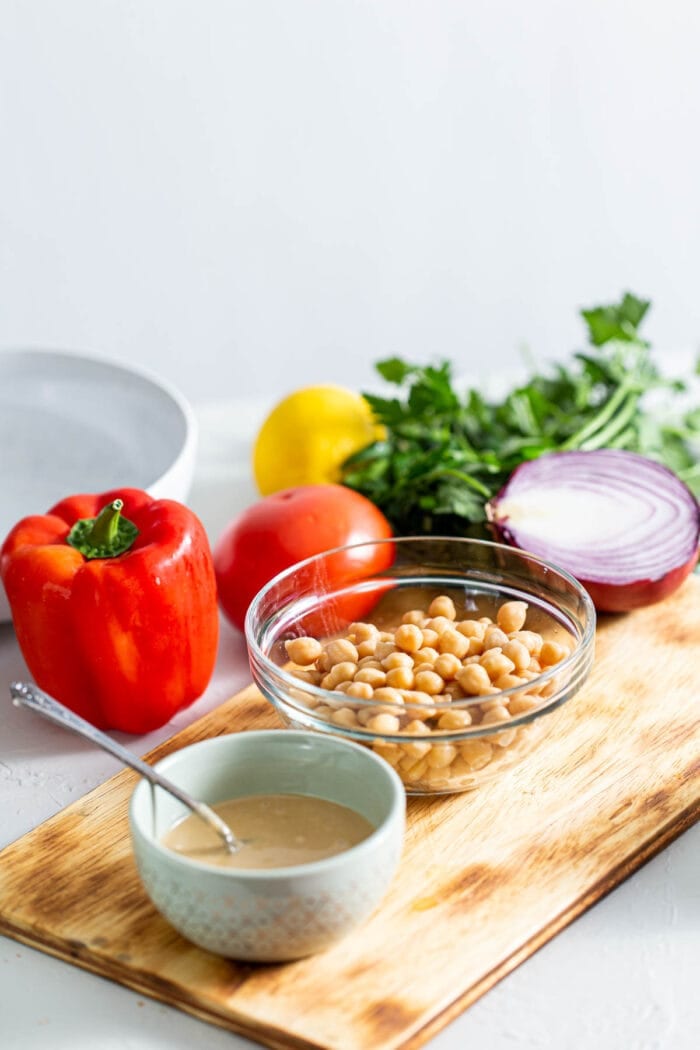
Gut health has been a buzz-worthy topic for a few years now — and for good reason. With an increased focus on what we’re putting in our bodies, we’ve come a long way in preventing chronic illnesses and keeping autoimmune diseases at bay.
However, aside from managing micronutrient diversity and daily caloric intake, there is a major player in maintaining great gut and brain health that seems to fly under the radar, dietary fiber.
WHAT IS DIETARY FIBER?
The term fiber refers to plant foods that cannot be digested or absorbed by the body. It is found in foods like vegetables, fruits, nuts, seeds, whole grains and legumes and is an essential nutrient, meaning it must be consumed through the foods we eat.
Unlike simple carbs and starches that get converted into glucose for quick access energy, fiber is an indigestible carbohydrate found in plant-based foods that supports proper nutrient absorption.
Consuming an appropriate amount of dietary fiber every day can ensure the maintenance of a well-balanced gut microbiome and a healthy digestive tract.
FIBER BENEFITS
Dietary Fiber is essential when it comes to keeping a happy tummy. This compound found in plant-derived food is responsible for more than helping you, well…“do your business” day-to-day. Without it, we wouldn’t be able to process our food properly and may develop long term digestive issues.
Here are some additional fiber benefits:
- Helps you to feel satiated after eating.
- Aids in lowering levels of cholesterol.
- Can help boost your metabolism.
- Keeps your skin feeling fresh and glowing.
- Reduces the risk of cardiovascular disease.
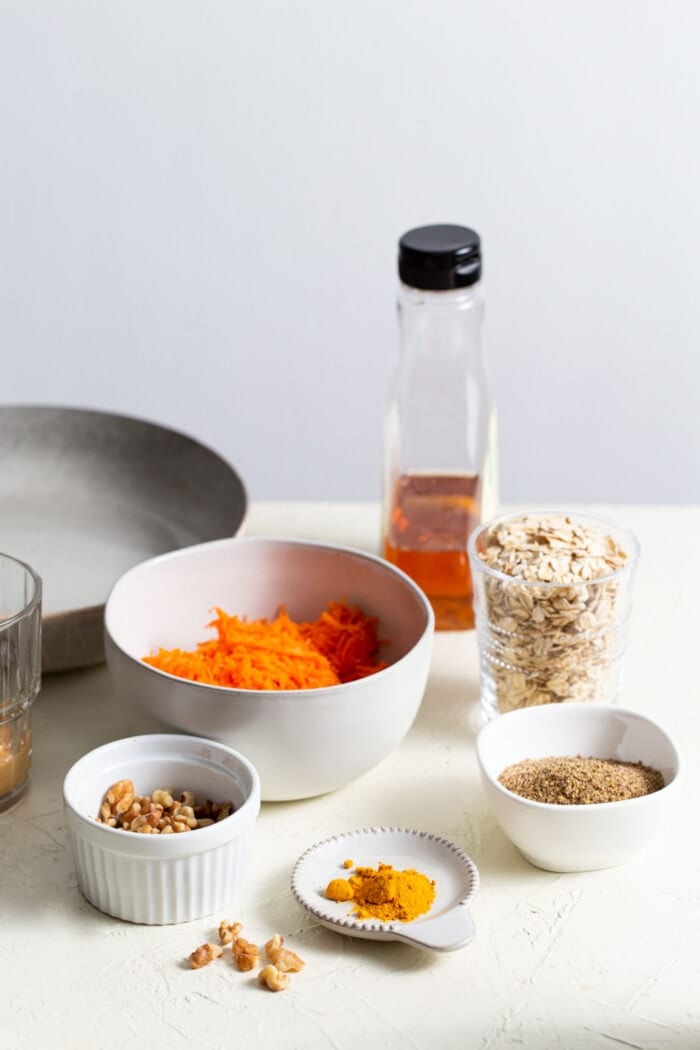
DAILY FIBER INTAKE
According to the most recent Dietary Guidelines published in both the United States and in Canada, the recommended dietary fiber intake is 14g/1,000 kcal. This adds up to 38g for the average male and 25g for the average female.
The RDI for dietary fiber is 38 grams per day for the average male and 25 grams of day for the average female. To visualize this amount, imagine 6 large apples or 8 bananas.
SOLUBLE VS INSOLUBLE FIBER
Coming from the carbohydrate family, dietary fiber itself branches out into two types — soluble and insoluble.
The biggest key point to help differentiate one from the other is that insoluble fiber does not dissolve in water so it passes through your system pretty much unchanged whereas soluble fiber creates a gel-like substance by drawing in water, helping to support regular bowel movements.
Both soluble and insoluble fiber are important in sustaining a healthy balance of good bacteria in your intestines.

DO YOU NEED MORE FIBER?
There are a few telltale signs that may indicate you need more fiber in your diet. The biggest and most common one? Constipation, or difficulty passing stool.
Without consistent bowel movements, you may start to feel symptoms of fatigue due to a buildup of toxic waste. You’ll also increase the chances of developing hemorrhoids and potentially, over time, involuntary release of fecal matter. That sounds fun, doesn’t it?
FIBER DEFICIENCY SYMPTOMS
Constipation is just one of the issues that come along with a lack of fiber in the diet. Other symptoms of fiber deficiency include bloating and gas, chronic inflammation, high cholesterol, weight gain, blood sugar issues, acne, cravings, and excessive hunger.
CONSTIPATION
Digestive issues such as constipation, bloating and diarrhea can all be signs you’re not eating enough fiber. Fiber helps keep things moving through the digestive tract as well as create softer bowel movements by absorbing water. If you’re missing that fiber and natural lubrication you can imagine how things might get backed up.
BLOOD SUGAR ISSUES
Fluctuations in your blood glucose (sugar) levels may be an indication you need more fiber. Fiber helps to slow the absorption of sugars, reducing swings in blood sugar levels.
Maintaining stable blood sugar levels is also important to help maintain healthy hormone levels, as well as prevent or manage diabetes and other blood sugar conditions.
Regulating blood sugar levels by consuming fiber-rich foods can also help prevent energy crashes, improve sleep and reduce cravings.
ALWAYS HUNGRY
If you find you’re hungry shortly after eating, it may be another indicator you’re lacking fiber.
Fiber helps you feel full and slows the absorption of sugars after eating, helping to prevent crashes that can leave you hungry, tired and craving more carbohydrates.
If you lack fiber in your diet, blood sugar surges after eating then subsequently crashes, leaving you hungry shortly after eating to help compensate for the crash. These are the big rollercoaster swings we want to avoid and eating enough fiber can help do that.
WEIGHT GAIN
Many fiber deficiency symptoms essentially come down to blood sugar control. Swings in blood sugar increase hunger and cravings, especially for sugar and carbs, regardless of if you actually need them. Excess sugar and calories when you don’t need them will lead to weight gain.
With that blood sugar rollercoaster also comes low energy, poor sleep quality, and hormone fluctuations. All of these areas are going to make exercise and healthy eating a challenge.
You can see how all of these symptoms may make it difficult to lose weight and even contribute to weight gain.
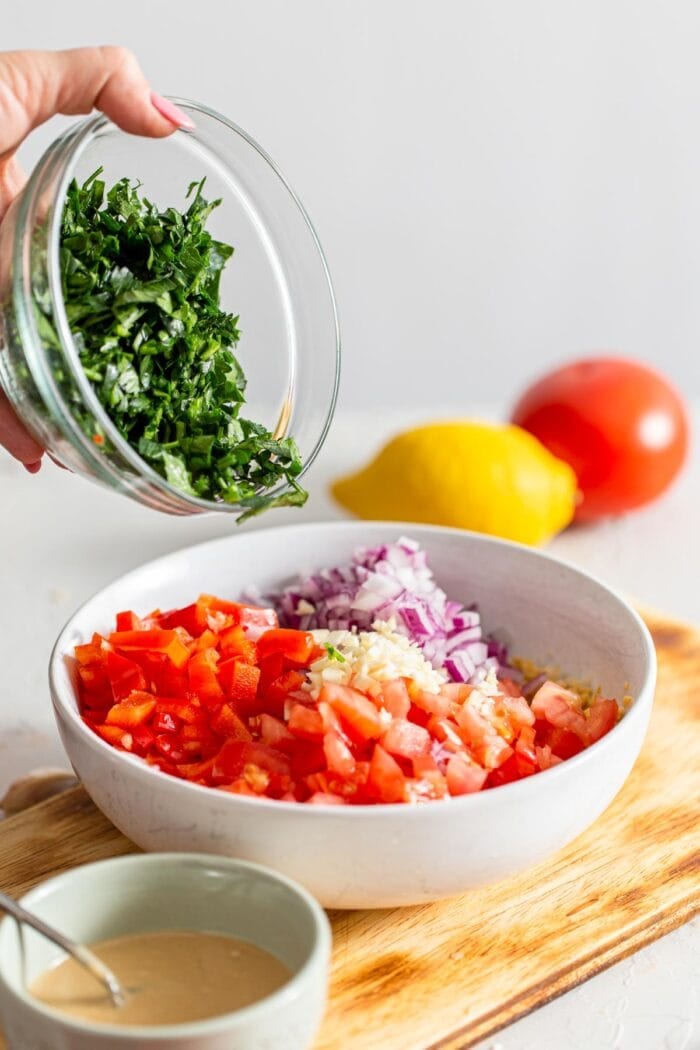
WHAT ARE GOOD SOURCES OF FIBER?
The good news is, all whole plant-based foods contain fiber. This includes nuts, seeds, beans, lentils, grains, fruit and vegetables.
If any of the fiber deficiency symptoms sounded familiar to you, start adding more of these foods to your diet.
As you make a conscious effort to eat more whole plant-based foods, make notes of changes you in your digestion, mood and overall energy throughout the day.
WHAT PLANT-BASED FOODS DON’T CONTAIN FIBER?
Processed and refined grains and sugars contain little to no fiber. This would be your white bread and rice, refined sugar and other processed foods.
There is nothing wrong with consuming these foods from time to time but you can see that if all you ate was processed foods you’d start to experience the fiber deficient symptoms we already covered.
Juice would also fit in here although pure fruit and vegetable juices still contain soluble fiber. I include homemade green vegetable juices in my diet as a source of nutrients and find it helpful for adding nutrition to my diet without overdoing it on fiber.
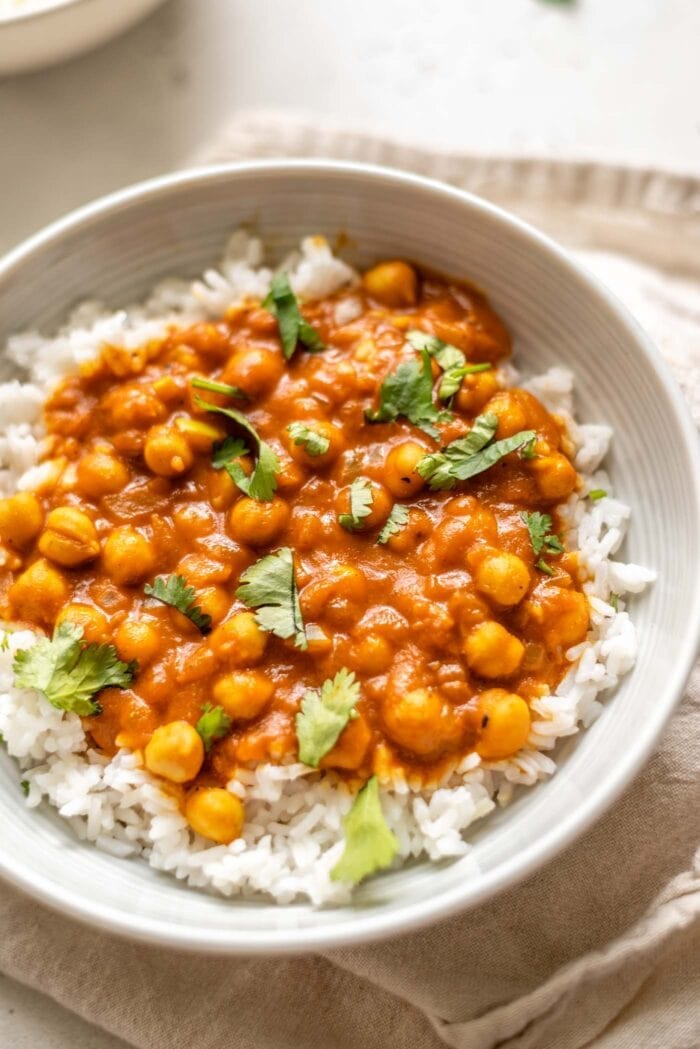
BEST HIGH-FIBER FOODS
The list of high-fiber foods below covers nuts and seeds, fruits and vegetables, whole grains and legumes. Note that all varieties of these foods contain fiber but I only listed a sample of each to give you an idea of some of the best sources.
The great thing about fiber and a whole food plant-based diet is you will easily get enough without even thinking about it, so there’s no need to worry about the best sources of fiber.
If you eat a variety of these foods on a regular basis, you’re good to go!
NUTS AND SEEDS
Nuts and seeds are a great source of fiber as well as omega-3 fatty acids, antioxidants, vitamins and minerals. Just a few tablespoons a day can help increase your fiber intake, as well as contribute to your daily protein intake.
Note that nuts and seeds, while wonderfully nutritious, are high in calories due to their fat content so they should be enjoyed in moderation. 1-2 ounces per day works for most people, depending on your nutritional needs.
- flax seeds – 4 grams in 2 tbsp ground
- chia seeds – 7 grams in 2 tbsp
- sesame seeds – 2 grams in 2 tbsp
- pumpkin seeds – 5 grams per ounce
- sunflower seeds – 3 grams per ounce
- almonds – 3.5 grams per ounce
- walnuts – 2 grams per ounce
- shelled pistachios – 3 grams per ounce
- psyllium husk powder – 4 grams per tbsp
For high-fiber nut and seed recipes, try my seed bread, sweet potato chia pudding and sesame energy bars. Nuts are seeds are great for snacking but also made good additions to salads, oatmeal, smoothies, dressings, desserts and granola.
WHOLE GRAINS
Whole grains are a good source of fiber plus B vitamins, carbohydrates and even some protein. This section includes whole grains as well as whole-grain products such as bread and pasta.
Some of the highest whole grain sources of fiber are listed below but of course, this list is not exhaustive as all whole grains contain fiber.
- farro – 10 grams in 1 cup cooked
- rolled oats – 10 grams in 1/2 cup dry
- brown rice – 3.5 grams in 1 cup cooked
- quinoa – 5 grams in 1 cup cooked
- bulgur – 4 grams in 1/2 cup cooked
- whole wheat bread – 2 grams per slice
- Ezekiel bread – 3 grams per slice
- whole wheat pasta – 6 grams in 1 cup cooked
For fiber-rich whole grain recipes, try my basil fried rice, farro squash salad, baked steel cut oatmeal or tempeh quinoa macro bowl.
FRUIT
Fruit is a wonderful source of fiber as well as other important vitamins and minerals. Include 1-3 servings of fruit per day to help meet your fiber and micronutrient needs.
- apple, with skin – 4.5 grams per 1 medium apple
- banana – 3 grams per 1 medium banana
- strawberries – 3 grams per cup
- raspberries – 8 grams per cup
- pear, with skin – 6 grams per 1 medium pear
- mango – 2.5 grams in 1 cup
- dark chocolate – 2 grams per ounce
To enjoy more fruit, try banana split chia seed pudding, kale spinach smoothie, breakfast quinoa and banana bluberry chia overnight oats.
VEGETABLES
Vegetables provide much of the insoluble fiber, or roughage that we need in our diet. All vegetables contain some fiber but here are some that stand out:
- green peas – 9 grams per cup
- carrots – about 2 grams per medium carrot
- beets – about 2 grams per small beet
- broccoli – 5 grams per cup
- spinach – 2.5 grams in 3 cups
- artichokes – 7 grams per medium artichoke
- potato, with skin – about 4 grams in one small potato
- sweet potato, with skin – 4 grams in 1 cup cubed
To get more veggies into your diet, try this sweet potato breakfast bowl, farro vegetable chickpea bowls, vegetable chickpea curry or this healthy everyday rainbow salad.
LEGUMES
Legumes include your beans, lentils, soy and peanuts. Legumes are good sources of fiber as well as protein, iron, B vitamins, minerals and carbohydrates.
- chickpeas – 6 grams per 1/2 cup cooked
- black beans – 7 grams per 1/2 cup cooked
- kidney beans – 6 grams per 1/2 cup cooked
- tempeh (contains probiotics) – 7 grams in 3 ounces
- lentils (all varieties are similar) – 12 grams per 1/2 cup cooked
For fiber-rich legume recipes, try this lentil nourish bowl, black bean soup, lentil quinoa curry or Thai red curry lentils.
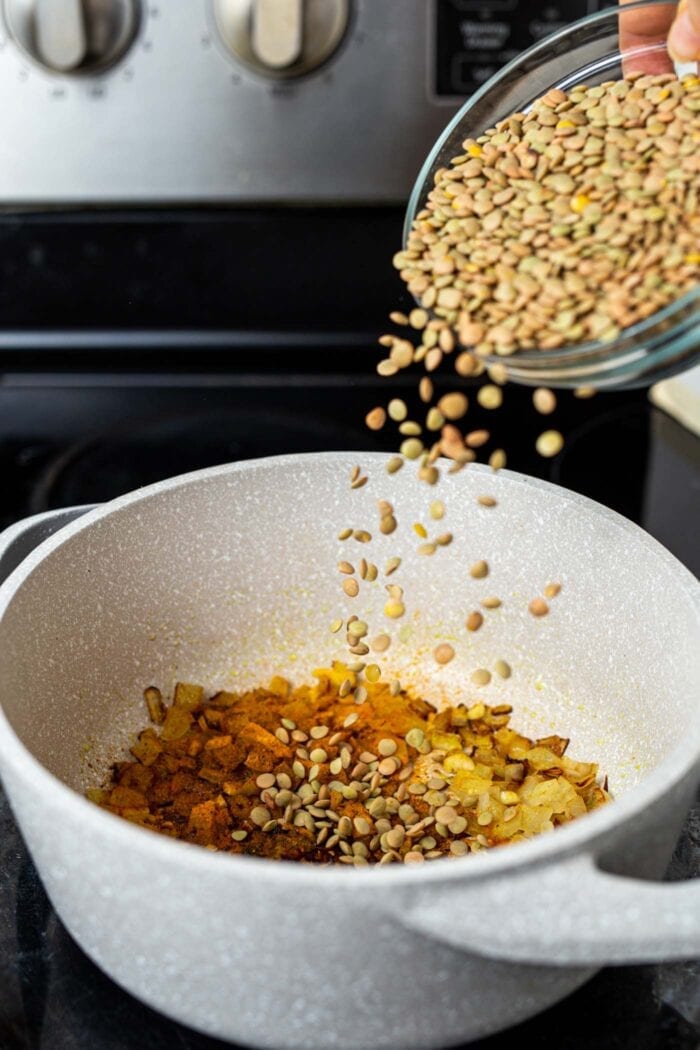
TIPS FOR HOW TO GET MORE FIBER
Here are 15 easy ways to add more fiber to your diet.
- Eat an apple a day. Apples are a good source of fiber as well as act as a prebiotic.
- Make a coconut yogurt bowl topped with high-fiber whole grain cereal, ground flax seeds and berries.
- Snack on raw veggies like broccoli and carrots dipped in hummus.
- Have a daily 1 ounce serving of raw nuts like almonds, pecans, walnuts or mixed nuts.
- Have a daily 1/2 to 1 cup serving of chickpeas, kidney beans or black beans. Adding a scoop to salads or making homemade black bean or chickpea soup is an easy way to get your daily serving.
- Try a lentil dish like my coconut red lentil dahl, lentil quinoa bowl or curried red lentil soup.
- Commit to eating 1 salad every day. Use this everyday rainbow salad for inspiration.
- Enjoy dried apricots, dates, figs, peaches or pears for a healthy dessert.
- Try a variety of whole grains like amaranth, barley or bulgur instead of rice.
- Choose whole-grain pasta, bread and tortillas.
- Enjoy edamame for a high-protein, fiber-rich snack.
- Add a spoonful of flax to oatmeal, smoothies and baking.
- Enjoy a daily green smoothie with berries and veggies. Try my kale spinach smoothie, mixed berry smoothie or green monster smoothie.
- Snack on popcorn.
- Try chia pudding. Chia pudding makes a great snack, breakfast or dessert. Try my coconut yogurt chia pudding, chocolate chia protein pudding or sweet potato chia pudding.
SAMPLE HIGH-FIBER MEAL PLAN
Use this sample meal plan as an example of what a day of fiber-rich eating looks like.
- Breakfast – Simple Banana Oatmeal, topped with a sprinkle of ground flax and 1/2 cup of raspberries (approx. 20 grams of fiber)
- Lunch – Kale Chickpea Stir Fry with Sweet Potato
- Dinner – Brown Rice and Baked Tempeh Bowls
- Snack – apple, 1-ounce almonds, 1 carrot cake energy ball
- Dessert – 1-ounce dark chocolate with peanut butter
This works out to over 50 grams of fiber so you can see how quickly fiber adds up when you eat a plant-based diet.
For more meal plans check out my 7-day vegan meal plan and 3-day whole food plant-based meal plan.
You can also find a couple of sample plans in this post on nutrition for plant-based athletes.
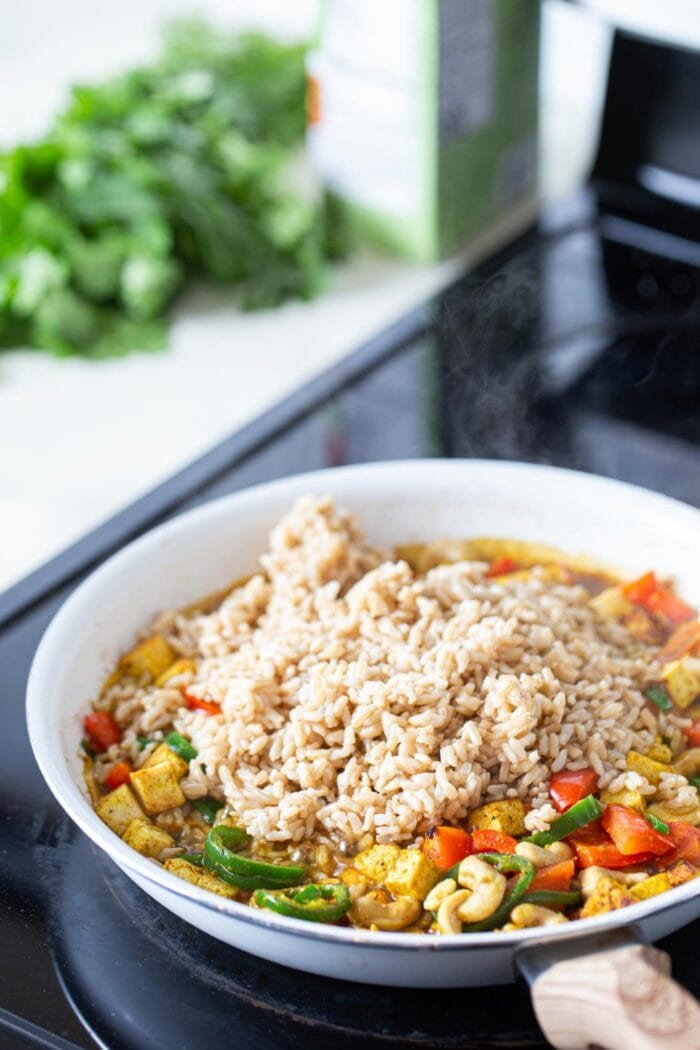
HOW MUCH FIBER IS TOO MUCH?
At this point, you’ve probably gathered that a high fiber diet points to a happier, healthier you. However, there can always be too much of a good thing…
Consuming enough fiber is absolutely crucial for optimal health, don’t get me wrong, but there is a balance that needs to be met for you to reap its benefits.
The biggest sign that your body might be trying to digest too much fiber? Gas and bloating. Again, not the most appealing subject—yet if your large intestine is working maybe a little too hard, either you’ve increased your fiber intake too quickly or you’ve been consuming too much for too long.
- Abdominal pain
- Loose stools or diarrhea
- Constipation
- Bloating
- Temporary weight gain from lack of nutrient absorption
- Reduction of blood glucose (mostly important for diabetics to monitor)
ARE YOU OVERDOING IT ON FIBER?
New plant-based eaters or anyone adding more plant foods to their diet, may find they initially overdo it on fiber. If you’re experiencing any of the symptoms above, consider:
- Add more fiber slowly. Don’t go from zero to a hundred overnight. Increase your fiber intake slowly over a few months to allow your body time to adjust.
- Remove fiber-fortified food. Some processed foods are fortified with additional fiber. Try cutting those out and sticking to whole foods.
- Stay hydrated. Making sure you’re drinking enough water and eating more foods with high water content—such as cucumbers or watermelon—will aid in proper stool formation and passing.
- Exercise. engaging in consistent, light exercise throughout the day can help keep digestive distress at bay and regulate the function of your large intestine.
- Educate yourself. Knowing which foods are rich sources of fiber and which have little, you can build your diet in a way that works best for you.
It can actually be quite easy to overdo it on fiber. I’ve been there myself, some days accumulating up to 80 grams of fiber in a single day if I’m not paying attention.
This is one reason I love enjoying a daily green juice. If you find you’re getting too much fiber but still want to maximize your nutrient intake a green juice can be helpful. Smoothies, while they still contain fiber, can also help lessen the load on the digestive system, if needed.
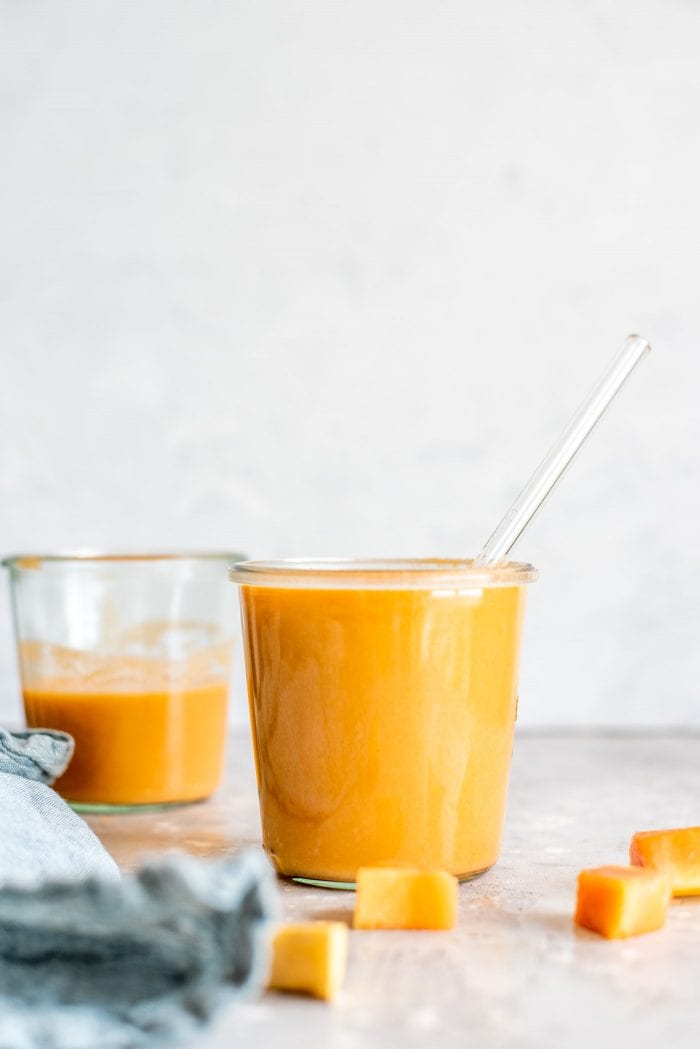
WHAT IF I NEED TO EAT A LOW-FIBER DIET?
There are medical conditions that require either a temporary or permanent reduction in dietary fiber. If you’re plant-based, this is tricky but it can definitely be done!
Below are some foods to include if you need to eat a low-fiber diet for medical reasons.
- tofu
- white rice, pasta and crackers
- pancakes made with white flour
- refined hot cereals
- white bread (go for organic sourdough)
- well-blended smoothies with protein powder
- fruit and vegetable juices without the pulp
- oat, nut and seed milks
- coconut yogurt
- olive, avocado, flax, hemp or coconut oil
- vegan cheeses and other dairy alternatives
You can also help your digestive system along by:
- pureeing higher fiber foods like beans, nuts and seeds
- making sure vegetables are well-cooked (roast or steam)
- removing the skin from fruits and vegetables like apples and potatoes
- staying well-hydrated
- thoroughly chewing your food
You can also use these tips and foods if you find you’re overdoing it on fiber.
These lower-fiber foods may also be helpful for plant-based kids who’s smaller tummies can fill up before their calorie needs are met.
Keep in mind, you may need supplementation if you’ll be restricting plant foods groups in addition to avoiding animal products. A multivitamin, omega-3, magnesium, B12, D3 and calcium supplement may be needed and should be discussed with your health care professional.
LISTEN TO YOUR BODY
Whether you might be eating too much or too little fiber, it’s never a bad time to take inventory on the fuel you’re giving to your body. While it may not always be the most attainable to keep everything dialed every single day, just remember the key is to start small.
Listen to your body, it knows best!
Note any changes you notice in your body (and mood!) then continue on doing what feels best for YOU. Listen in to your body—it’s yours and it always knows best.
